BenQ HT5550 (US) / W5700 (UK-Europe)
Product Name: BenQ HT5550 (US) / W5700 (UK-Europe)
Product Description: 4K DLP Projector
-
Design - 9.2/10
9.2/10
-
Video Quality - 9.2/10
9.2/10
-
Inputs / Ports - 9.2/10
9.2/10
-
OS, Apps and Features - 8.8/10
8.8/10
-
Price / Quality - 9.5/10
9.5/10
Summary
Total Score
Pros
- Amazing 4K performance
- Very good out-of-the-box colors
- Great contrast with Dynamic Iris
- Flexible installation
Cons
- Brightness could be better
- DCI-P3 coverage average in HDR
- Very high input lag
- Slightly noisy from the pixel shifting technology
Cheapest Places to Buy :
*We are a reader-supported website. When you buy through links on our site, we may earn a small affiliate commission at no extra cost to you. Home Media Entertainment does not accept money for reviews.*
4K UHD projectors have been with us for a few good years now but to get a native 4K projector is still a pricey consideration. This has changed with the arrival of 4K pixel shifting which has enabled manufacturers to create projectors that can produce very sharp 4K images but for a fraction of the price of a native 4K model. One such manufacturer is no other than BenQ that has managed to create a very big lineup of projectors that cover all needs and all budgets. To do that they have created 4 main series that are distinguished by their performance and in our BenQ HT5550 review today we will be looking at their top offering in the second in line series called CinePrime.
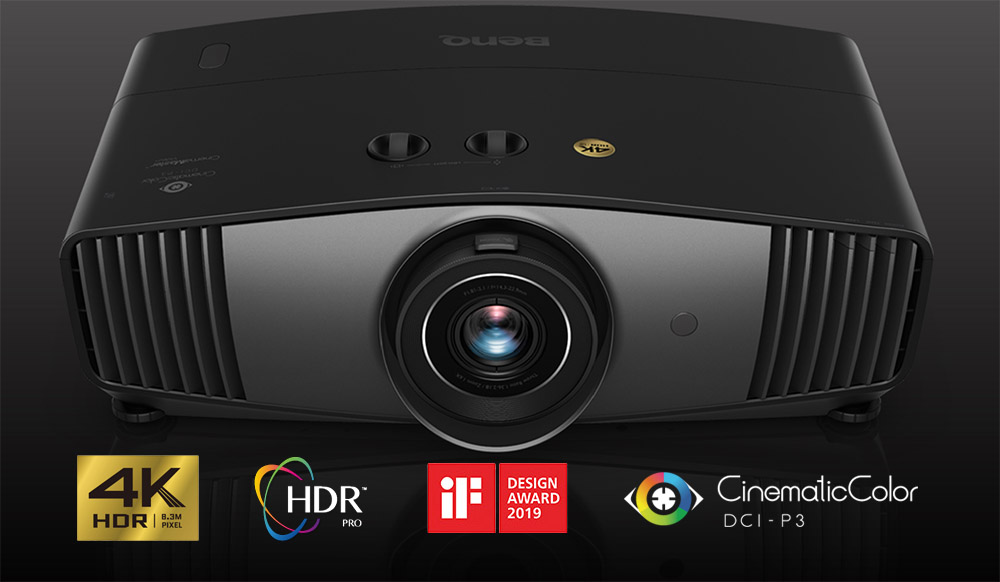
The CinePrime series is mostly aimed for serious home theater users that seek more than just the basic experience and are willing to spend slightly more for that but cannot go for one of the high end CinePro models. Recently we had the pleasure to review another BenQ projector belonging in the same CinePrime lineup, the HT3550 which is a step down in performance from the HT5550 we will be looking here today. Keep in mind that the HT3550 belongs in the sub-$2,000 category while for the HT5550 we have gone to the $2,000-$3,000 price range.
You could say that the BenQ can be more compared with Epson’s fabulous Home Cinema 5050UB although that one is still more expensive that the HT5550. Featuring the same 0,47″ UHD DLP chip from Texas Instruments we had seen before and being rated at 1,800 lumens of brightness this is an interesting model offered by BenQ. Featuring a lot of extra bells and whistles like a dynamic iris, auto tone mapping, HDR10 and HLG support, 3D compatibility, motion interpolation, a wealth of picture adjusting settings through the included CinemaMaster Video+ suite and claiming 100% DCI-P3 color coverage the HT5550 has a lot going for it so let’s see if it has what it takes to take on the competition.
Design
In true BenQ fashion the projector comes under different names in different markets so before we start talking about the actual design we need to clear up the naming confusion first. The HT5550 is being sold in the US market while the same projector comes by the name of W5700 in the UK and many European markets. Both of them are completely the same so keep that in mind when you are looking for this specific model.
The HT5550 goes away slightly from the typical BenQ look that many of their middle and low tier models use. You could say that it tries to borrow some design elements from the CinePro models like the symmetrical design with the centered lens and dark color for the chassis. For a 4K UHD pixel shifter the HT5550 is not the biggest one in its class but it’s definitely bigger than the HT3550 we had measured before. With a size of 19.37 x 6.61 x 13.74 in (492 x 168 x 349 mm) and a weight of 14.3lbs (6.5kg) the projector sits above the average size for this class and this happens as this is not aimed to be a portable model.
Now as far as it’s actual looks, as we just said this is the only model in the CinePrime series that features a symmetrical design with the lens being placed exactly at the center of the front face and with only the IR sensor sitting on the right side of it. Zoom and focus controls are on the lens barrel while on the right front corner along with the right side we get a huge air inlet vent while from the left side the hot air comes out. Ventilation seems to be very good in this one with plenty of openings for easy movement of the air.
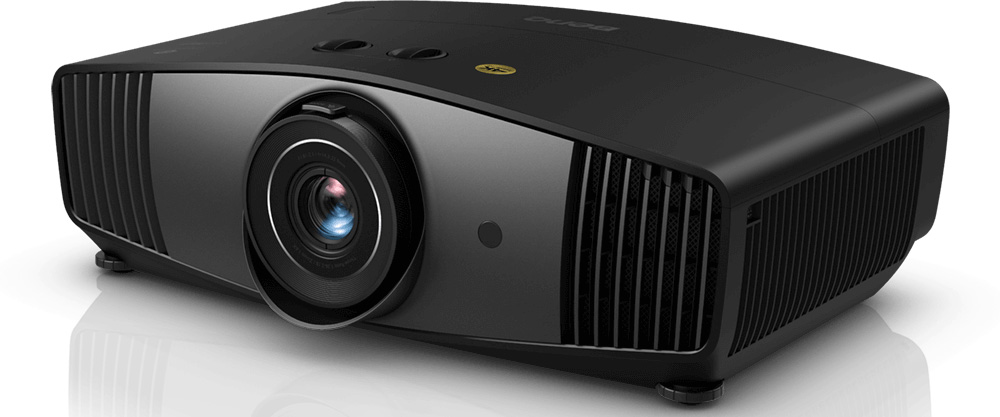
On the top side just above the lens we find two knobs for the lens shift. We get two knobs because you can adjust separately the vertical and horizontal shifting this way. Other than these two the top face is pretty clean with only a second big IR sensor sitting at the bottom right corner that is used in case you place the projector on the ceiling. A few logos and features are the only thing you will find in an otherwise empty top.
Usually manufacturers tend to place the built-in buttons on the top side but the HT5550 has them placed at the back which you may or may not like depending on how you are going to use it. All buttons are placed on the far left side of the back panel that also incorporates all the connection ports on it’s right side.
The buttons we get are the typical ones. A single power button on the left with a group of nine buttons to the right give us a very basic layout. Except from the usual up, down, left and right buttons for navigation there is a centered OK one while the top left is used for source selection, the top right for mode selection, the bottom left is the back function and the bottom right the MENU one.
Lastly we shouldn’t forget to mention the two front adjustable feet that you can use in case you plan to table mount the projector. We would like to have an adjustable foot at the back also in order to be able to level the projector more easily but only a pad is provided so the two front legs is all there is.
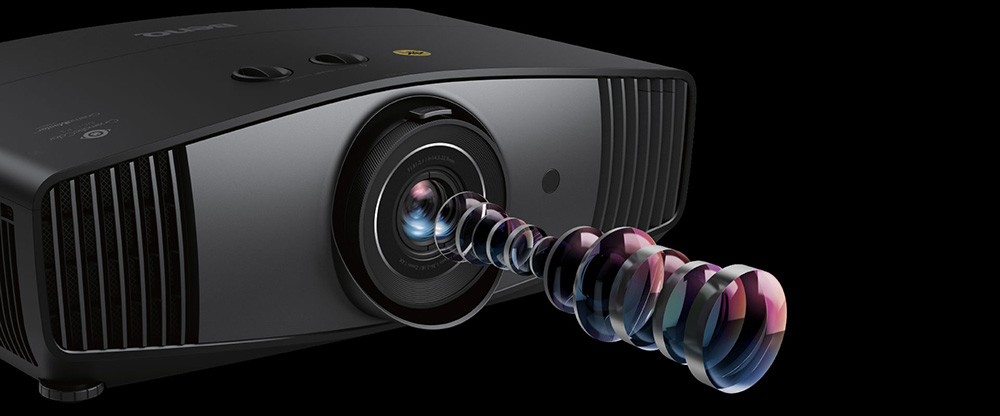
Let’s see now the lens this one is using. An 11-element lens array is structured into six groups with metal barrel and cell framework. Also BenQ’s 4K optical system uses high grade glass for more realistic image quality. The proprietary low-dispersion lens coatings minimize chromatic aberration providing greater light penetration that results in better color performance, 4K UHD content in amazing clarity, and sharpness across the entire screen.
Another upgrade we get here compared to the other CinePrime units is in it’s zoom and lens shift performance. The HT5550 has an improved 1.6:1 zoom while the lens can be shifted 60% in vertical and 23% horizontal which may not be as much as some other LCD or LCoS projectors but is way more than what we find in many low cost DLP models. Keystone correction is also available but this needs to be used only if absolutely necessary as this is a function that can lower the image quality something obviously we want to avoid.
In terms of noise the HT5550 seems to be rated at similar levels to the other CinePrime projectors. Keep in mind that what we have here is basically a 4K pixel shifter so there are two sources from where sound comes. From the air venting system and the pixel shifting technology. BenQ rates the projector at 32bBA in normal mode which is slightly above that of the HT3550 and at 26dBA in Eco mode which is slightly lower.
In our case we were more interested in testing it in normal mode and with this we can admit that the projector was relatively silent but during completely quiet moments you could hear a soft buzzing. If you are not extremely noise sensitive this one will not bother you at all but you have to try for yourself because there are definitely going to be a few that will find this noise a bit frustrating.
As for lamp life things seem to be pretty equal across the board so the HT5550 seems to get for the same 4,000 hours lamp life in normal mode that can extend up to 10,000 hours in Eco mode. Some older BenQ models were lagging in this regard but it seems that BenQ had rectified this problem and is in line with competition now.

We always liked that BenQ was offering good quality remotes with even their lower cost models so the HT5550 could not be any different. The remote we get here is similar to the one we saw in the HT3550 but with a slightly different layout and buttons functionality. Coming in black color this time to be in line with the projector’s main color, the remote feels pretty sturdy and with good quality plastic. The rubber buttons have good size and adequate space between them while placement is very good and easy to distinguish.
At the very top a light button for the backlight function sits between the dual button power setup. Under them we get a trio of buttons for keystone correction, Default and Test pattern with the usual circular navigation controls placed at the middle. Back, Menu and Source sit below with another three buttons in white color to be more prominent for Motion Enhancer, HDR and Cinema Master functions are placed in a single line below. Lastly a group of 12 buttons give you access in the projector’s most frequent used functions.
BenQ has paid a lot of attention to this unit and it’s remote. A patterned lens ring prevents stray light and rearward tilt eliminates optical engine light leakage. A anti-accumulation lens hood prevents falling dust from gathering while vertical louver air intakes rejects dust from cooling system. Small details but shows that there is more to this unit than you may initially thought.
Video Quality
Technology used
BenQ is doing many things right with their projectors. But if there is one thing we have seen in many of them is that they are advertised having “True 4K resolution” which could not be more misleading. We understand that this is all marketing and that manufacturers need to sell but there is no wrong in educating the consumers that a good 4K pixel shifting projector can offer amazingly sharp 4K images instead of trying to convince us of this being a real 4K projector which is not.
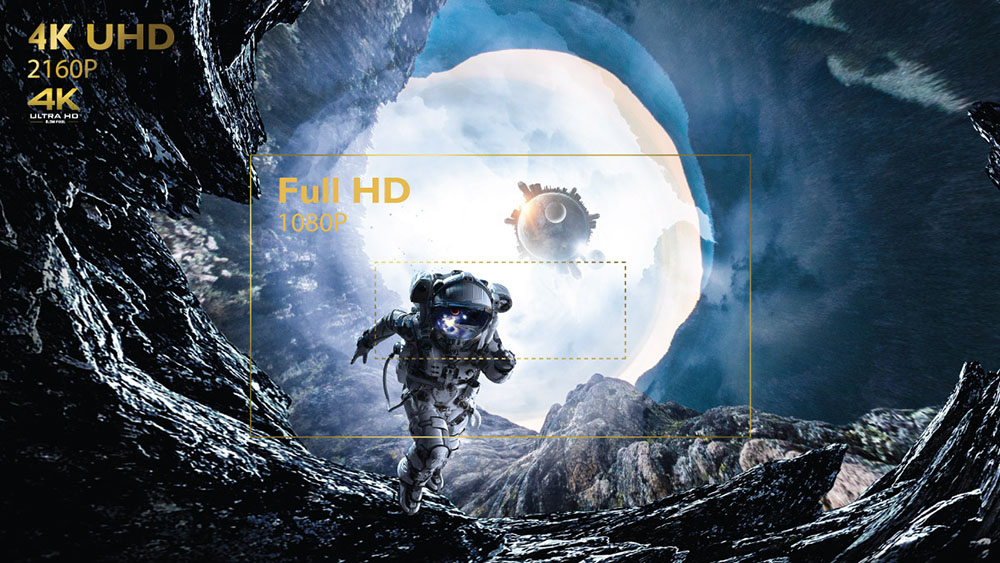
The BenQ HT5550 is using the same single 0.47″ DMD chip from Texas Instruments that we had seen before in the HT3550 and TK850. This is the latest generation of this chip offering the HT5550 pixel shifting technology which basically means that it can display a Full HD image and by repositioning it slightly and in fast succession three more times it gives us the illusion of a 4K image. The speed is so fast that the human eye cannot detect the change and the end result is really very close to a real 4K image.
There has been a few updates on this latest chip and this includes faster repositioning speed which allows for more bright and more clear images along with a narrower frame than it used to be which is a pleasant update. As always another advantage this single chip has is that it is not prone to misalignment that we have seen in other multiple LCD chip technologies and thus to blur, shadowing and interference patterns.
If there is one disadvantage is that it can be a bit noisy due to the extreme speed of the pixel shifting and can create a light buzzing noise which can be heard in relatively quiet moments. How bothering this can be it really depends on how sensitive you are to sounds so when it comes to pixel shifting projectors we always recommend to check it out for yourself just to be on the safe side.
4K UHD / HDR Content
Moving on to our 4K/HDR testing we decided to try out the 4K UHD version of Aquaman which has amazing image quality and is very brightness demanding at certain parts. First of all about image quality. As we have seen before in projectors that use the same DLP pixel shifting chip the HT5550 was able to produce very sharp 4K images. Looking at the screen it will be hard to believe that you are not looking at a native 4K projector, it’s that good. There are so many details on the ocean floor, on their armors and on every surface that you will stare at the image more than paying attention to the film.
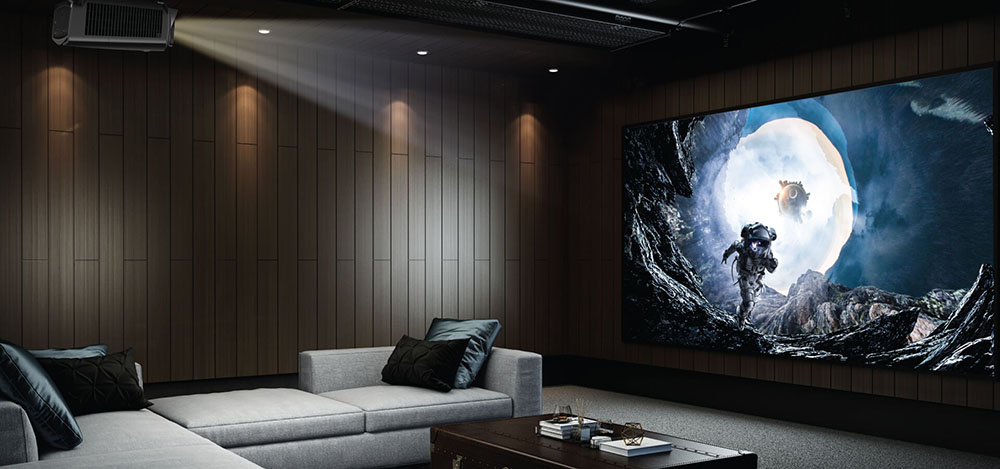
With the inclusion of a Dynamic Iris things improve a lot when it comes to black levels and shadow details. In fact the HT5550 was able to produce much deeper blacks than what we had seen in the HT3550 and is closer to the Epson UB series but still slightly inferior. On the brightness front the projector was good but not great. We cannot say that it could offer the kind of pop you would expect and the lower brightness rating that comes with doesn’t help at all. Colors were pretty good even without any calibration so if you are not into it you will greatly appreciate what it has to offer right out of the box.
One feature that we usually see in more expensive projectors and found it’s way in this one also is Auto Tone Mapping. What this does it trying to adjust HDR dynamically according to each scene needs. This in combination with the Dynamic Iris and Dynamic Black technology ensures that the HT5550 is a visible improvement when it comes to overall contrast and image quality in general.
The projector comes with the usual support when it comes to HDR which means it can display both HDR10 which is used for UHD playback and HLG that is most commonly used in broadcasting. Obviously no Dolby Vision or HDR10+ as these two are not yet supported by any projector in any price range.
Full HD / SDR / 3D Content
For testing the 1080p capabilities of the unit we decided to go for the Blu-ray version of Lord of the Rings: The Return of the King. We are sure that many still have large collections of 1080p content so any serious projector should be able to offer great out of the box Full HD performance even if it’s main focus is 4K.
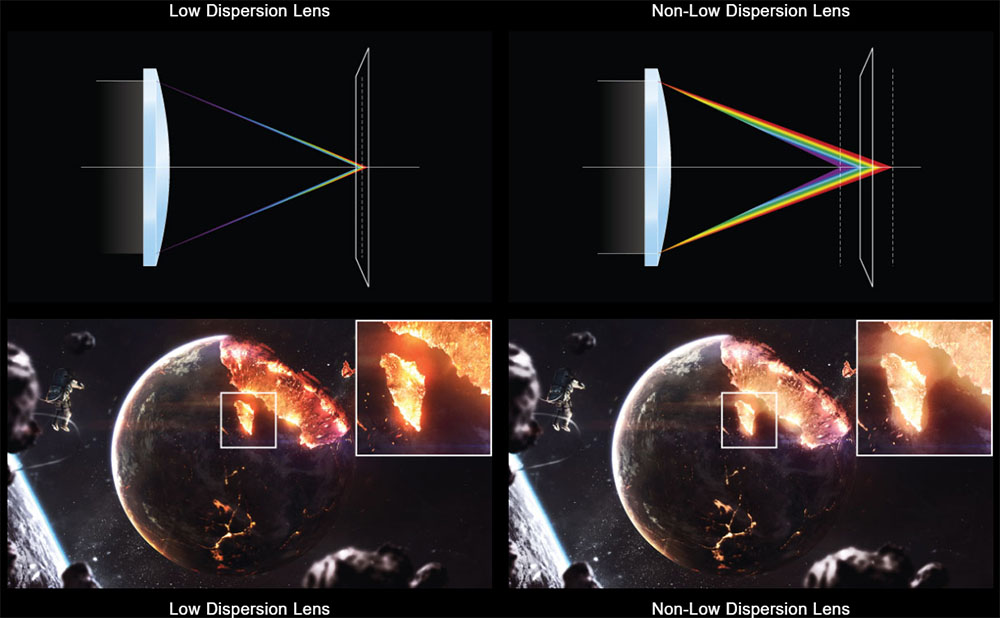
And in this regard the HT5550 did not disappoint. Very good image clarity and sharpness with very good colors and adequate brightness. Motion performance was also above average as many BenQ projectors has got us used to. In general the projector is a real treat when it comes to Full HD content. Everything is handled very good and with little calibration needed. Colors felt spot on and really brought forward many details on the surfaces, clothes as well as skin imperfections.
The projector also is capable of displaying 3D content but while the overall image was very good and without any visible crosstalk or artifacts brightness left a lot to be desired. Being less bright than the HT3550 the HT5550 gave us a more dim 3D picture and as always when viewing 3D content brightness takes a hit so this is not the strongest aspect of this projector. It’s good, but not great.
The projector uses the usual DLP-Link 3D glasses and you will have to buy the separately as they are not included in the package.
Color Coverage
Let’s take a look at the color performance of the HT5550. The projector is using a 6-Segment (RGBRGB) color wheel and the interesting part here is that BenQ has added a special color filter that is used in D. Cinema mode that improves colors even further in order to reach the claimed 100% of DCI-P3 color coverage. But this extra filter while it improves the colors it lowers the brightness so it’s a give or take situation but at least you can choose what you like the most. So to make things simple it is basically a combination of picture mode along with the Wide Color Gamut and Brilliant Color settings.
BenQ suggests to use D. Cinema mode in low lit environments for SDR content and with this one we were indeed able to get the acclaimed 100% coverage in the DCI-P3. When HDR content is engaged unfortunately the projector cannot reach 100% coverage in the DCI-P3 with WCG on. This also varies depending on what setting you choose for Brilliant Color as this also tends to lower the overall color coverage.
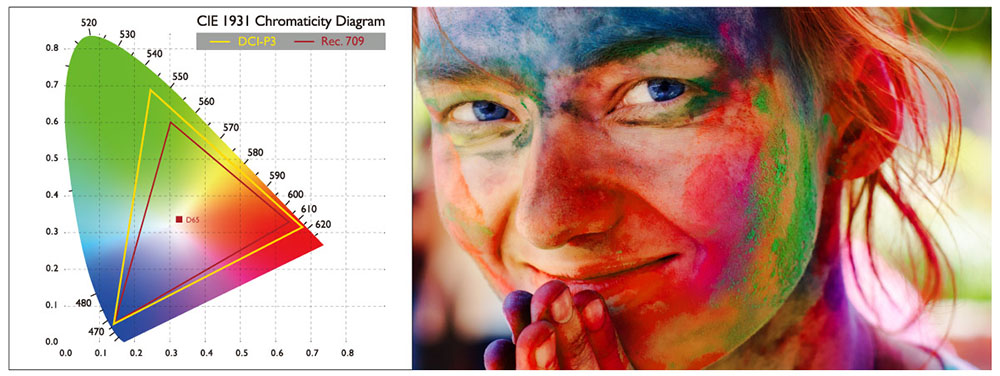
Brightness / Picture Settings
When it comes to brightness things get a bit interesting. The HT5550 is rated as a 1,800 lumens projector which is relatively low especially if you consider that the HT3550 which is a class lower comes at 2,000 lumens of brightness and the even less capable HT2550 which had 2,200 lumens. But numbers by themselves don’t mean anything so let’s see how all these translate to the real world.
A similar set of pictures modes is found with the projector’s menu showing Bright, Vivid TV, Cinema, D. Cinema and a User defined one. But these are the ones you can switch to manually as there are a few more that the projector switches to when the appropriate signal is detected. These are for 3D as well as HDR and HLG modes. Lastly there is also a Silent mode that basically switches off the pixel shifting technology and turns the projector to a pure 1080p one. As we always do with our measurements we used the widest angle with Normal lamp mode.
As in all cases the Bright mode offered the most brightness which we measured at 1385 lumens but we saw the same green bias we had seen in the HT3550. You should try to avoid this mode as it doesn’t have very accurate colors and should be used only in the case where there is extreme ambient light in the room and you need as much brightness as possible. Next was Vivid TV which we measured at 1011 lumens which offers more accurate colors while Cinema mode came third with 803 lumens and D. Cinema last at 517 lumens.
When it comes to 4K/HDR the projector will automatically switch to it’s HDR10 mode with Wide Color Gamut (WCG) turned on by default but with the option to turn it off if you want. Leaving it on will give us better color reproduction but at the expense of brightness that’s why this should mostly be used in a dark or low lit environment. For bright rooms you can loose some colors by turning it off but you gain a lot of brightness that is much needed here.
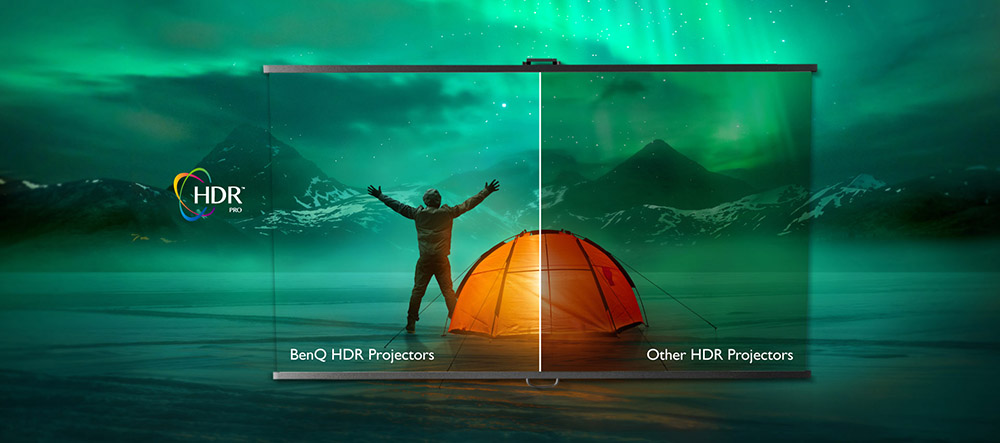
When it comes to 1080p/SDR content it is advisable to use D. Cinema which has the Wide Color Gamut setting locked on by default in low lit rooms and Cinema mode with WCG turned off in bright rooms in order to get the most brightness you can from the projector in expense to some color coverage.
Black Levels / Contrast
While there are so many things to like in these low cost DLP projectors one thing that they couldn’t manage to have is very deep blacks. We have seen some of these units trying to rectify the problem by using a Dynamic Iris like the HT3550 or the TK850 and while this does help a little the overall result still leaves a lot to be desired. And to get to good black levels you would have to go for the UB series from Epson that is in the $3,000 price range.
Now the HT5550 is offering much better black levels than the other CinePrime models and is almost as good as the Epson 5050UB but not exactly the same. With a price difference of about $300 at the time of writing we believe that the HT5550 comes extremely close in this regard and offers amazing value as far as black levels is concerned. With a contrast ratio of 100,000:1 along with the help of the Dynamic Iris this unit offers deep blacks and great shadow details that are unique in this category.
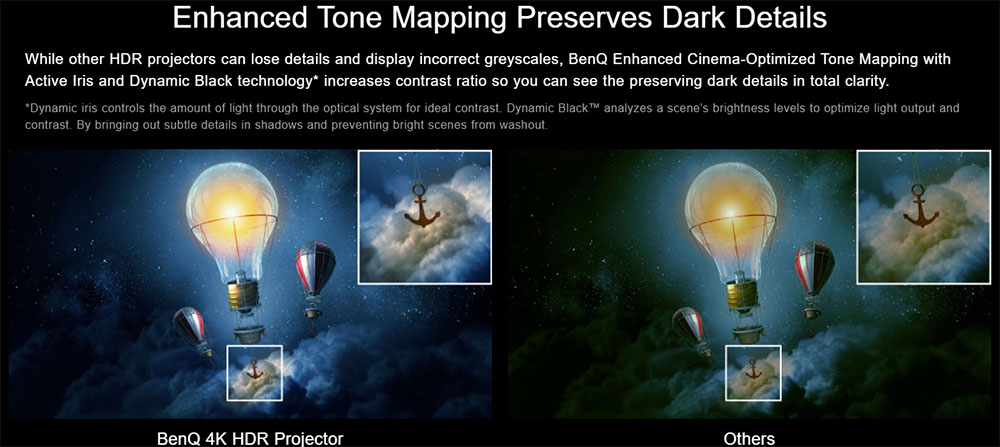
As things are at the moment we would say that the HT5550 offers the best black levels in this price category. Nothings comes close to it and only the Epson 5050UB cab beat it but also comes at $300 higher in price. BenQ did a really good job in this.
Input Lag
Next in line comes our input lag testing. For projectors we always consider a maximum of 50ms to be a respectable limit when it comes to gaming but unfortunately the HT5550 disappointed us in this regard. With Full HD 1080p content we got an average of 61ms input lag which is above what we would consider acceptable while feeding a 4K signal made things even worse as this number went up to an average of 89ms. Now in both cases motion interpolation was turned off and switching that on would give us even worse measurements.
But as always we tried how these numbers translate with a brief session of Call of Duty WW2 which is ideal for measuring fast responses. Here we need to make clear that we are not hardcore gamers, but mostly casual users so our standards are not so strict as some other gamers. During our time with our trusted PS4 we can say that the high input lag didn’t completely destroy our gaming experience but it does take a little time to get used to it especially if you are going to play in 4K resolution. Is it an overall disaster? Hell, no. We could even say that we had an enjoyable time but the HT5550 is not the kind of projector for hardcore gamers. But for casual ones? We think it can do OK.
As a small tip if you are only playing in 1080p resolution then you can try out to enable Silent mode as this turns off the pixel shifting technology and seems to improve input lag slightly. It’s not a day and night difference but we did get a measurement of 56ms this way so why not get the best out of it.
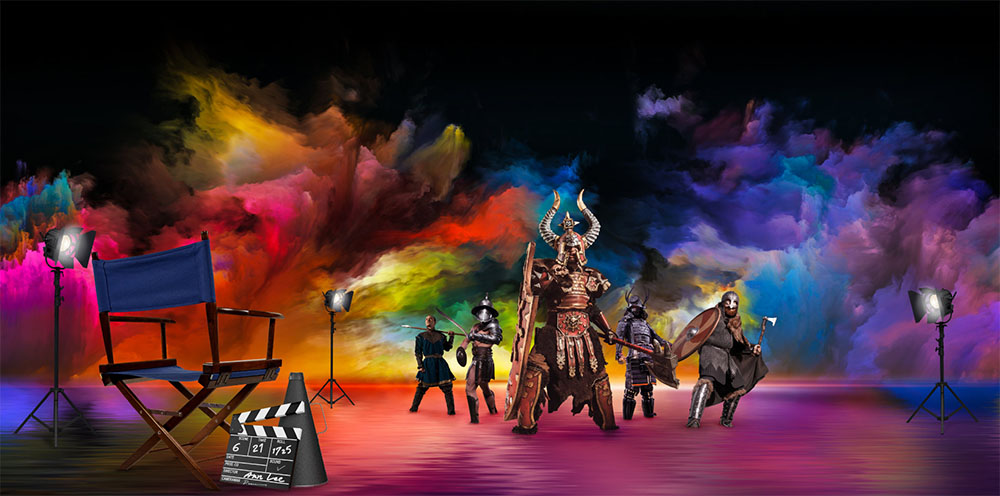
Motion Performance
The projector comes with the CinemaMaster Video+ suite that is used in the other CinePrime models also. This suite includes the Motion Enhancer 4K feature which is basically the projector’s motion interpolation function. What this does is to insert 36 interpolated frames between sequences to produce seamless, vivid 60 frames-per-second videos. This way laggy images, jittery playback, and blurry shadows are greatly improved.
You have the ability to set how much you want to use of it but higher settings can make images look strange and it’s a known effect of high usage of CFI. It is preferable to always use as low settings as possible in order to keep the motion judder free but also as true to the original as possible.
Inputs
With the HT5550 being a step up from the HT3550 and the other units that belong in the CinePrime series it seems that we also get a welcome upgrade to the included ports. As we mentioned above all of them are located at the back of the unit and to the right.
From left to right we get a Ethernet port for wired connections to the internet, a digital optical audio output, an IR input, a 12 volts trigger for use with a motorized screen, a USB 3.0 for connecting some external storage and stream content, 2 HDMI inputs, a mini Type-B USB for firmware updates, a classic RS-232 port, another USB port for connecting external storage only this is a USB 2.0, a 4th USB with a 2.5A rating for charging and last but not least a 3.5mm audio out mini jack.
A few notes to make here. First of all both HDMI ports are 2.0 and support HDCP 2.2 which is very good as many low cost projectors offer a single HDMI 2.0 and another which is HDMI 1.4. Also it’s amazing the number of USB ports available, including the newer 3.0 but also the older 2.0 for compatibility. Also getting an Ethernet port at this price range is not seen very often while getting an optical output is also a welcome addition.
Overall we are very pleased with what BenQ decided to include and is a step up from the usual layout we see in these lower prices.
OS, Apps and Features
Menus and settings are the usual ones we have seen in many BenQ models. Basically it’s the same as the HT3550 with an additional tab for Network. As such the ones available are Picture, Display, Installation, Network settings, System Setup Basic, System Setup Advanced and Information. In each tab you will get the appropriate sub-categories depending their functionality. Nothing out of the ordinary here and while the projector includes lots and lots of settings everything can be found very easily and quick.
One feature that needs extra mentioning is the CinemaMaster Video+ suite we talked briefly above. Now this version of CinemaMaster Video+ seems to be similar to the one we had seen in the HT3550 and includes a few picture quality features. In the HT5550 this suite includes the Color Enhancer which allows you to fine-tune the saturation of colors with larger flexibility. It modulates complex color algorithms to flawlessly render saturated colors, fine gradients, intermediate hues and subtle pigments.
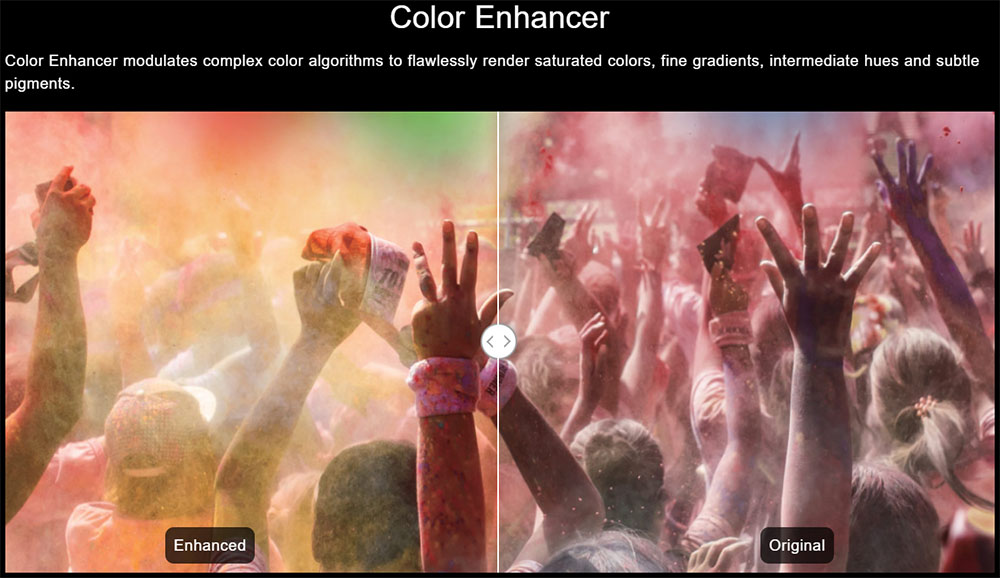
We also get Flesh Tone which provides a smart adjustment of hue only for calibrating people’s skin color, not other colors in the image. It prevents discoloration of skin tones from the light of the projection beam, portraying every skin tone in its most realistic shade.
Another feature is the Pixel Enhancer 4K which is a super-resolution technology which radically enhances Full HD content in terms of colors, contrast, and textures. It’s also a Detail Enhancement Technology refining surface details and composition. Users can adjust levels of sharpness and detail enhancement for optimal viewing. For last we left the Motion Enhancer 4K which we already talked about in the motion performance section.
Another feature we find in this model is a built-in media player which has the same functionality we saw in the HT3550. We cannot say we are thrilled about this media player’s capabilities as they are extremely limited. It doesn’t support either the mostly used H.264 (AVC) codec or the newer H.265 (HVEC) one and instead it can only playback the older MPEG-1, MPEG-2 and H.263 standards along with a limited selection of image and audio files.
We should not forget to mention that the HT5550 comes with the Imaging Science Foundation’s ISFccc calibration built-in and as such HT5550’s image and color performance can be customized for any space, along with preset light balance modes for day and night.
Before closing a few extra features that are worth mentioning include a Smart Eco function that can greatly extend the lamp’s life, HDMI-CEC which can turn the projector on and off automatically when the other device that the projector is connected to also supports that and a High Altitude Mode in case it is needed.
What the projector does not have is any built-in audio capabilities but this was to be expected as this is not supposed to be a portable projector but is aimed mostly for home theaters where you will use a separate audio system.
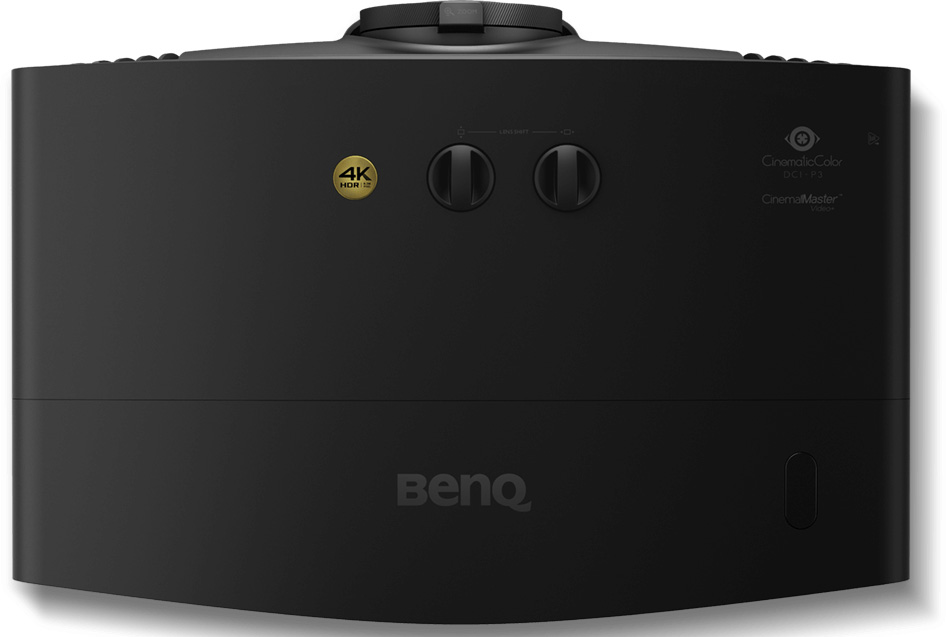
Final Thoughts
We reached the end of our review so we need to summarize everything and to be honest there is so much to like in the HT5550. This is a projector that is clearly a cut above the most low end 4K models.
The projector managed to keep most of what the HT3550 had to offer and improved upon many of them. As such we got amazing 4K images with great sharpness and clarity while without calibration the colors were pretty good and accurate. Black levels and shadow details are greatly improved and contrast is much better with the inclusion of a Dynamic Iris. Installation flexibility is great as the increased zoom and lens shift being offered will be greatly appreciated. The projector offers many picture settings like the CinemaMaster Video+ suite along a wealth of extra features like a media player, ISF built-in and HDMI-CEC. Lastly we should not forget to make a special mention to it’s quality design and well made remote which also includes a backlight.
On the downsides we can say that we were a bit disappointed by the brightness this unit could produce. For an HDR projector brightness was lacking and this affected both it’s HDR as well as 3D performance. Also it seems that the projector cannot reach it’s acclaimed DCI-P3 color coverage in HDR mode. Input lag was also measured very high so you have to look elsewhere if you are a hardcore gamer while this is not the most quiet of projectors and the pixel shifting technology noise can be bothering to some.
Closing what we can say is that if you want a 4K projector but you are looking for something better than the basic experience those sub-$2,000 units offer the BenQ HT5550 is an amazing offer and one that you should be looking at. It may not be as good as the Epson 5050UB but also comes with a lower price than that. And to be honest in this price you are not going to find better blacks and contrast than in this one making it an ideal and excellent value for money choice. Highly recommended.

For more reviews you can check our dedicated 4K Projector reviews list or even look at our Product Reviews Table where you can find the brand and specific product you are looking for.
Cheapest Places to Buy :
*We are a reader-supported website. When you buy through links on our site, we may earn a small affiliate commission at no extra cost to you. Home Media Entertainment does not accept money for reviews.*

It is refreshing to see BenQ making a statement in the 4K video projection home entertainment field. I feel the DLP is a marvel of modern engineering. I have in my possession an early version of the DLP chip packaged in a case with a glass window. Since the shimmering micro mirrors use reflected light this system is much more efficient that LCD projectors where the light has to go through the LCD light valve itself.
Does this system use a conventional high output light source or an LED one? I know that there are video projectors that use laser light sources, but I doubt this is one of them. They are very expensive still.
I liked your reporting on the color properties of this projector and the details of the lens system. This looks like a quality projector most homes would like to have in their home theater room.
Cheers.
Edwin
Hey Edwin. Most low budget DLP projectors use conventional light bulbs and this one couldn’t be any different. Keep in mind that cost is the number one factor here so having a low budget DLP projector with a LED light system would seem out of place.
I had a home cinema years ago, but have sold it due to other priorities as well as not having a place to build it as we have moved to a new home. I enjoyed the article quite a bit as it is very thorough and touches all the important aspects of selecting a good projector, as well as lots of info for the techie inclined users. I had a Sony VPL-HW10 which was amazing in every aspect but was lacking in luminance if you had the intention to use it during daylight hours.
The Benq projector you have reviewed seems like a good overall performer, but I would be worried about the noise from the pixel shifting properties. Further, the position of the buttons is to my dislike, they should be positioned further forward on the side, away from the input/output connections.
Overall a comprehensive review of the projector that will help in knowing about what you are getting if you buy one.
Well, the pixel shifting noise is in reality one of the few disadvantages of this technology. Although I wouldn’t call it a problem entirely it really depends on how sensitive you are to it. Some people may not be bothered by it all all while others may find it extremely frustrating. That’s why in all our projector reviews that involve this technology we suggest to have a first hand test in order to determine if it is audible or not.
Nice review. Are you familiar with the Benq W5000? Its a $5000 dollar back then, 1080p projector from around 2008 which I am still using after all these years. It used the larger DLP chip in it, so I wonder how the Benq HT5550 would compare to the W5000? I know all the specs on both projectors and it would be interesting to see after all these years if technology has improved enough to replace the W5000 with the HT5550? Of course I could buy one and do my own little comparison to see what the differences will be:)
Hello Jeff. Although I know of the W5000 I didn’t have the chance to make a thorough testing on it. But comparing it to the HT5550 is a bit unfair, don’t you think? One is a Full HD projector while the other is a 4K one so they don’t directly compare. Obviously there are some specs that you could compare but numbers usually don’t mean much and especially when we are talking about two projectors that belong in different categories.
Stratos, Nah, I don’t think its unfair to compare the two. Contrast could be much better with the W5000 due to having the larger chip, and it is a very sharp 1080p projector. Many of us long time projector owners have not made the move to the new “4K” DLP projectors due to the contrast being subpar, and not being actual true 4K. Only one way to find out is for me to get one and see for my self what improvements there really are:)
If you are waiting for native 4K then you will have to double that price as the cheapest one costs around $5,000 at the moment like the Sony VPL-VW295ES. But if your main concern is contrast you can look into Epson 5050UB which is only slightly higher in price than the HT5550 and has better and deeper blacks for around $3,000.
Stratos, Thanks for the feedback and I will report back my findings once I get a HT5550 and compare it to the W5000.
I will be glad to hear from you again Jeff. Take care!